Sado Island’s lesser-known treasure
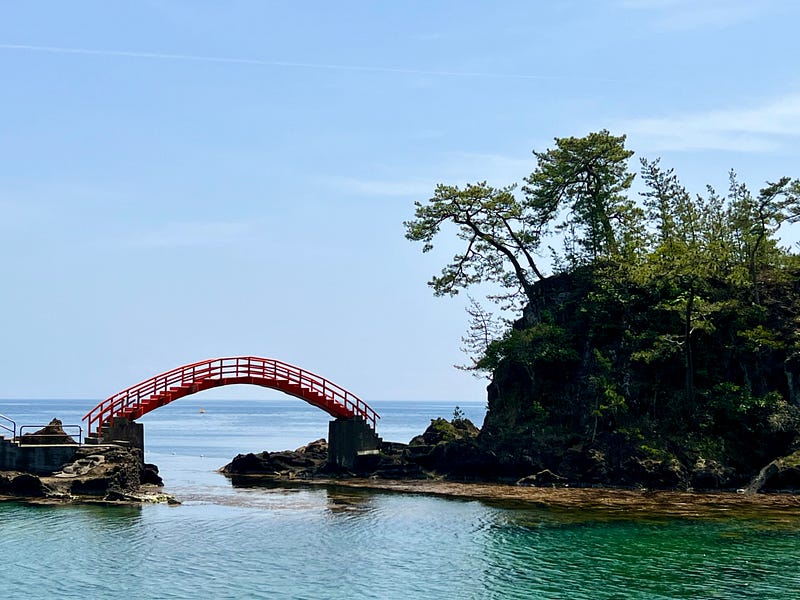
Last month I had the opportunity to visit the fascinating island of Sado, off the coast of Niigata Prefecture in northern Honshu. It felt like a land that time forgot, so charmingly rustic and old-fashioned were its buildings.
Located in the Sea of Japan, Sado was once home to mines that flourished from the early 17th century until the last one closed in 1989. Together, these mines produced an astounding 78 tons of gold and 2,300 tons of silver. That’s a lot of precious metals!
Nevertheless, I was surprised to learn that during those same years, 30% of the island’s wealth was concentrated in the quiet port town of Shukunegi.
Naturally, I had to explore.
Shukunegi
Shukunegi is on the southeast coast of Sado Island, an easy drive from my inn on the southwest coast. During the Edo era (1603–1867), the port bustled with trade. Hundreds of Sengoku-bune, a type of Japanese wooden sailing ship, were either based there or stopped by on their way to and from the port of Sakata, in the north, to Osaka on the far side of Honshu.
The name, Sengoku-bune, means “1,000 koku ships.” Koku is a Japanese measurement that had long been used for rice. One koku equals 150 kilos. Rather than in currency, taxes were paid in numbers of koku of rice. Samurai received a set number of koku as their yearly wages. And Daimyo lords were judged wealthy by the number of koku of rice their domains produced.
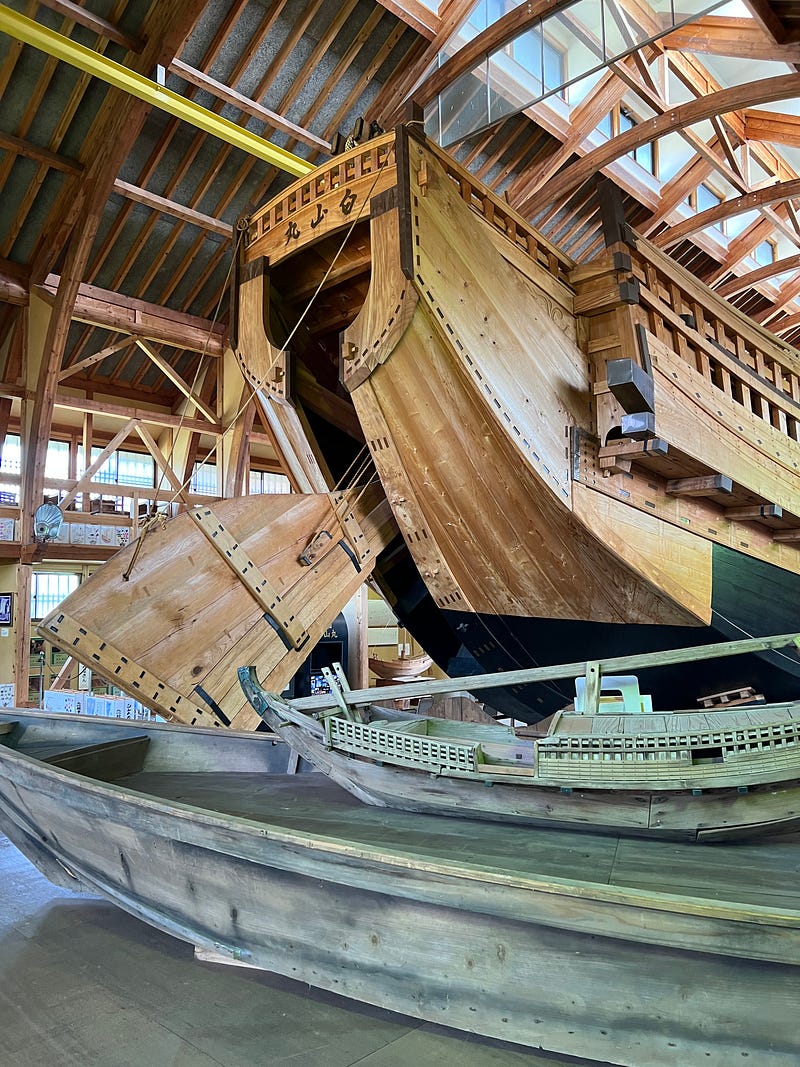
These impressive sailing ships, the Sengoku-bune “1,000 koku ships,” carried 150,000 kilos of rice from the great rice-producing areas of northeastern Japan down to Osaka, stopping at ports along the way. They returned with pottery, various other goods, and remarkably, stones to replace the weight of the rice and provide necessary ballast for the ships.
You can spot these stones around the town, used in roads, foundations for buildings, monuments, and the like. One bridge in Shukunegi is made from stones carried on one of the Sengoku-bune all the way from Onomichi City, in what is today Hiroshima Prefecture.
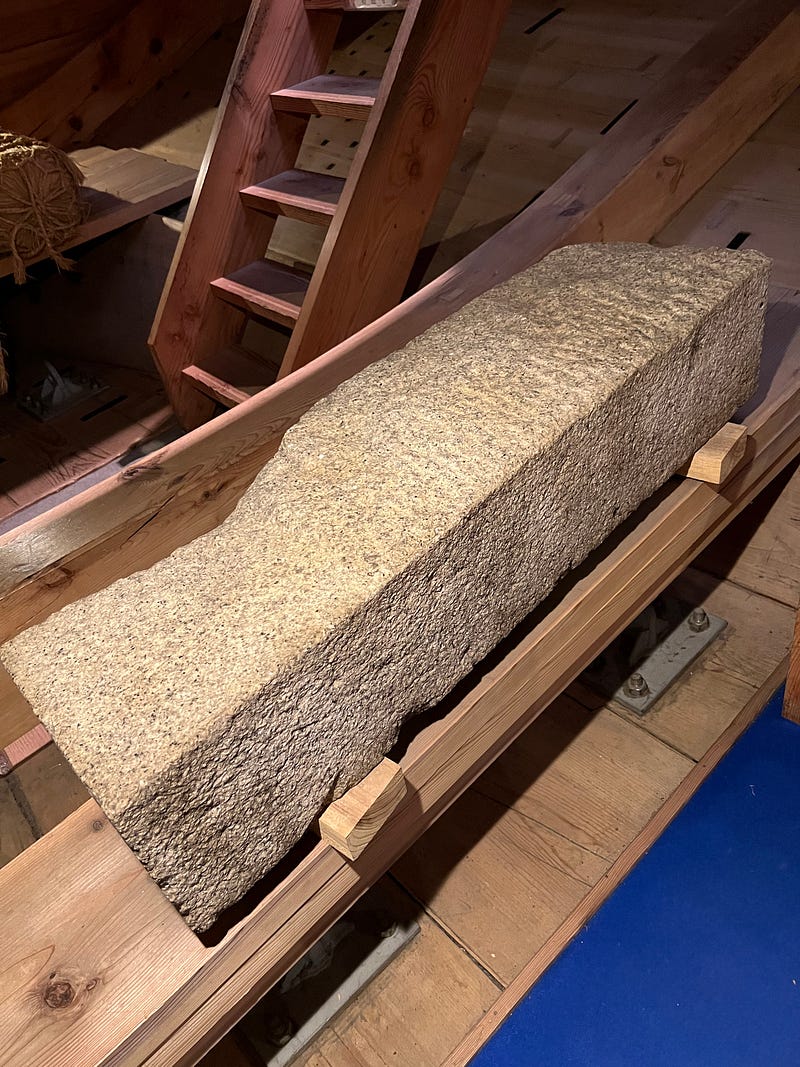
Shukunegi is situated on a small piece of land surrounded on three sides by hills. In the late Edo era, the town along with the surrounding countryside consisted of 120 households and 500 residents. There were peasants, shipowners, captains, sailors, shipbuilders and carpenters, blacksmiths, and bucket makers. As well, there was a continuous stream of men who came and went on the Sengoku-bune.
People still live there today.
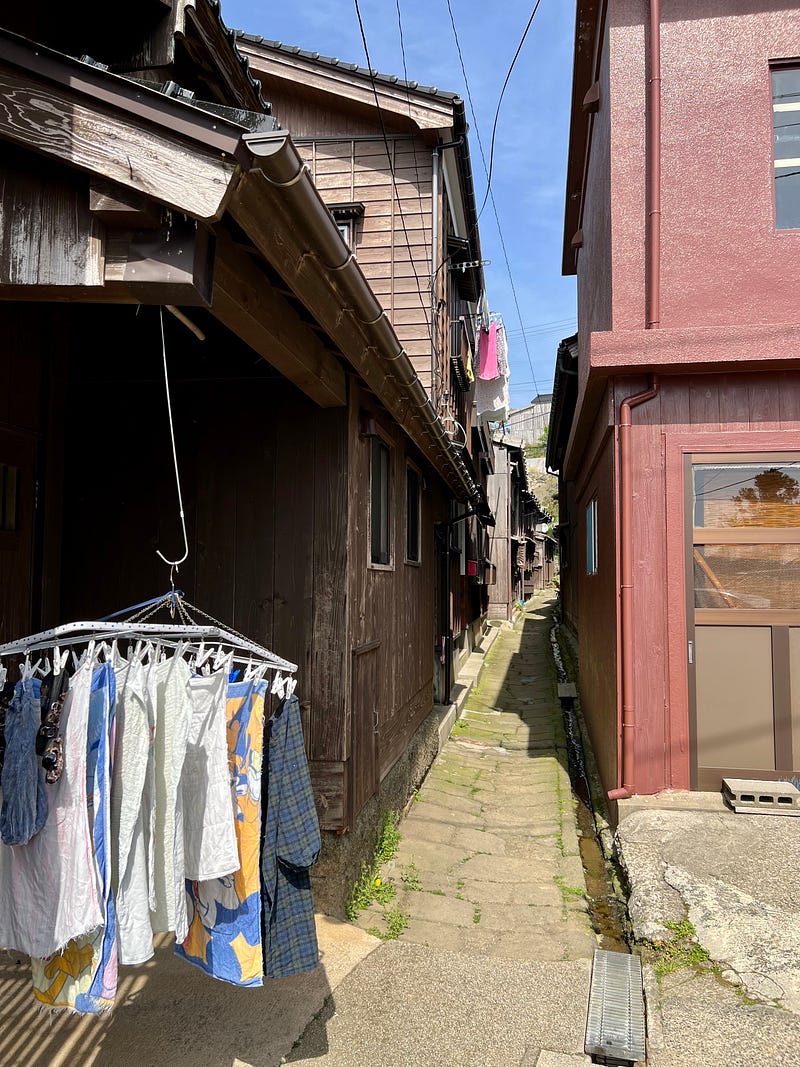
To fit the population in, architects had to be creative, fitting the buildings into small and irregularly shaped patches of land between streams and roads. They also made good use of any leftover wood from shipbuilding and from old, dismantled ships.
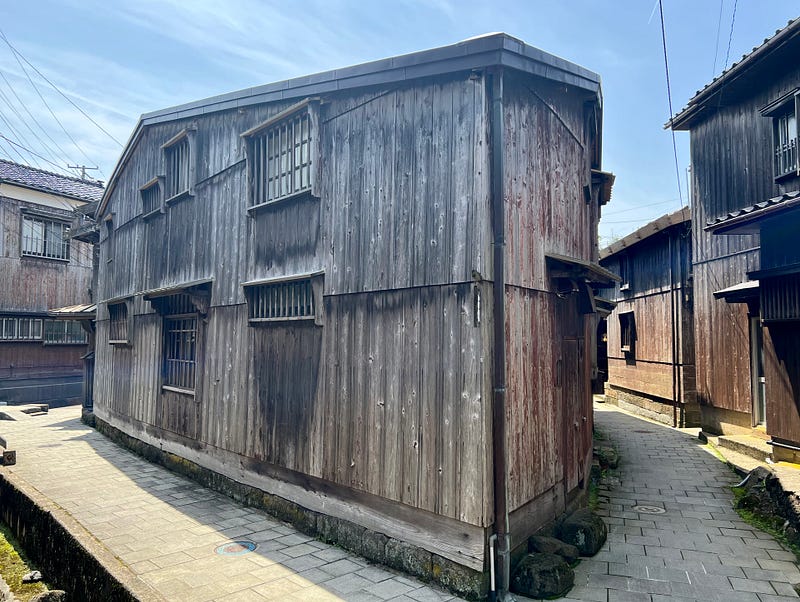
Prosperity threatened
In December of 1802, a 6.5 to 7.0 magnitude earthquake occurred that nearly put an end to Shukunegi’s prosperous trade. The land and sea levels along the coast were raised by two meters. The Sengoku-bune could no longer harbor in the small port. The sea had become too shallow.
Thankfully, one resourceful man came up with a solution.
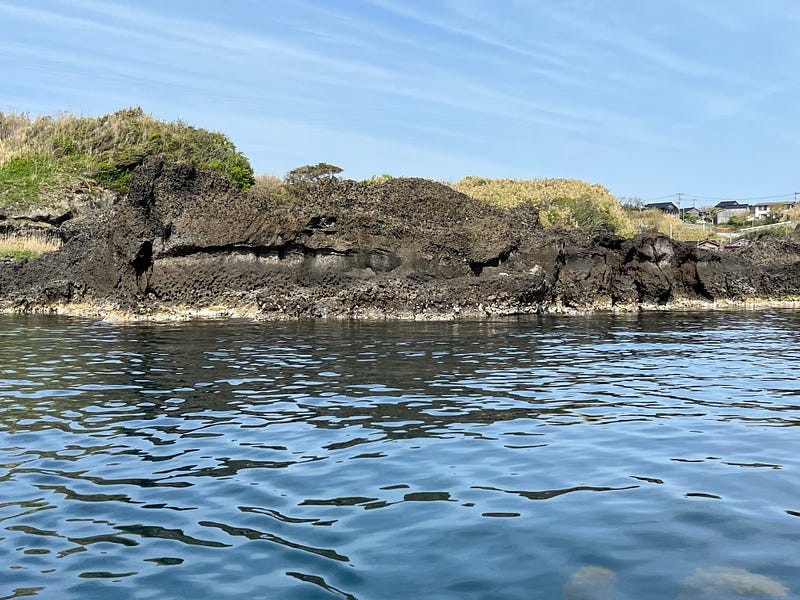
Tarai-bune
Miso making requires fermenting soybeans with saltwater and rice koji — yes, the same koji that is used in making sake — in huge barrels made from cedar and bamboo.
The story is told that a miso maker was gazing at his big barrels and struck upon an idea. He cut one in half and found that it made a fine shallow-bottomed boat. It was big and stable enough to haul freight to and from the Sengoku-bune anchored offshore.
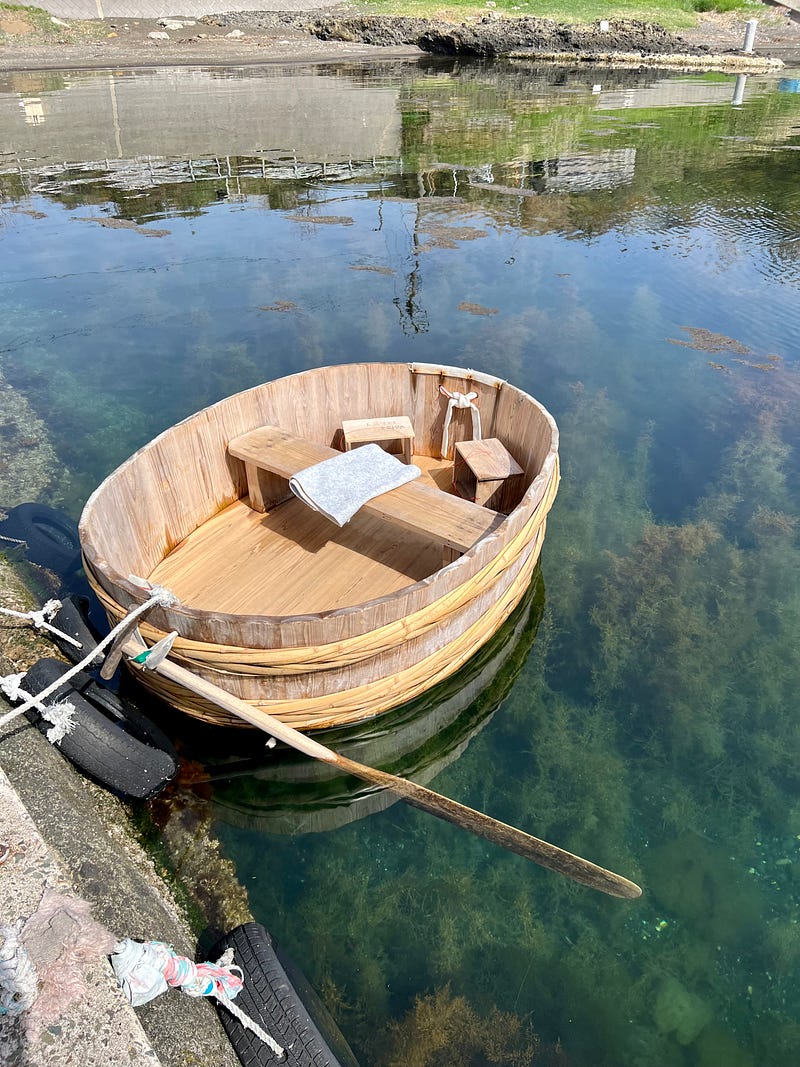
That innovative miso-maker had made the first han-giri, or “half-cut.” The idea caught on. People started building these boats and adapting them, making them smaller and then oval-shaped. They came to be called tarai-bune, “washbasin boats.” They are controlled by using one long oar.
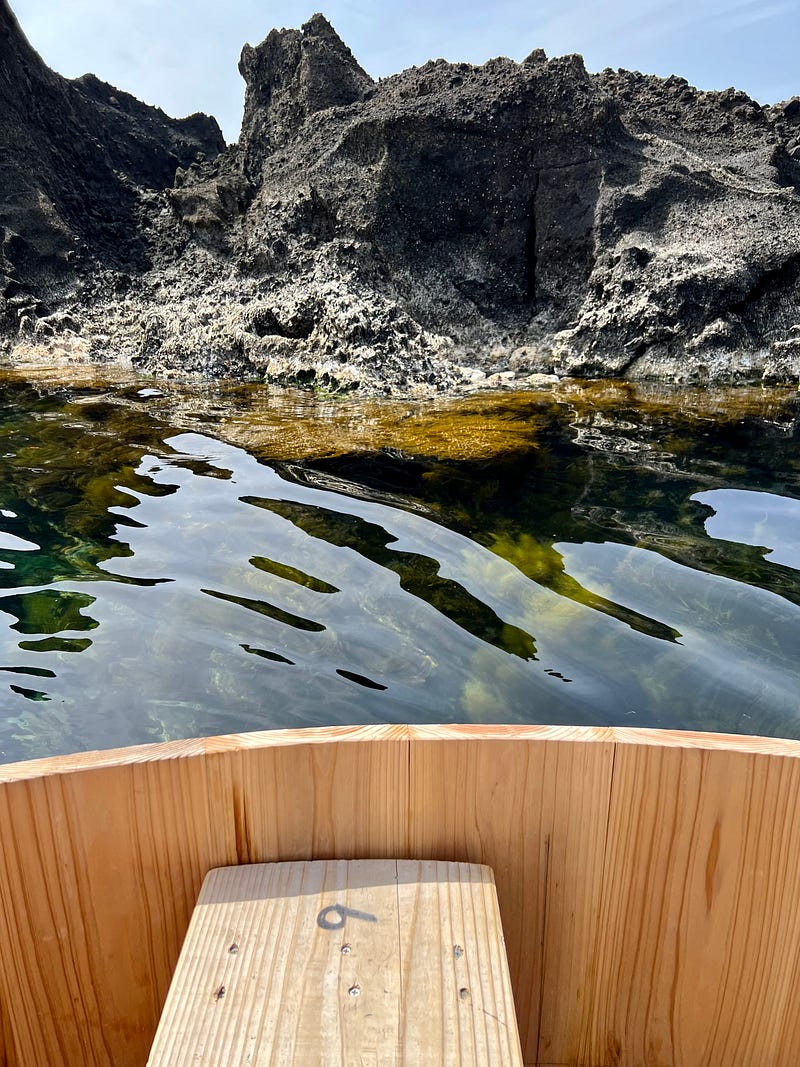
Fishermen use tarai-bune even today from which they hook abalone and flatfish from the shallow seafloor. Their small size makes them easy to navigate through the narrow waterways and coves of the Sado coast.
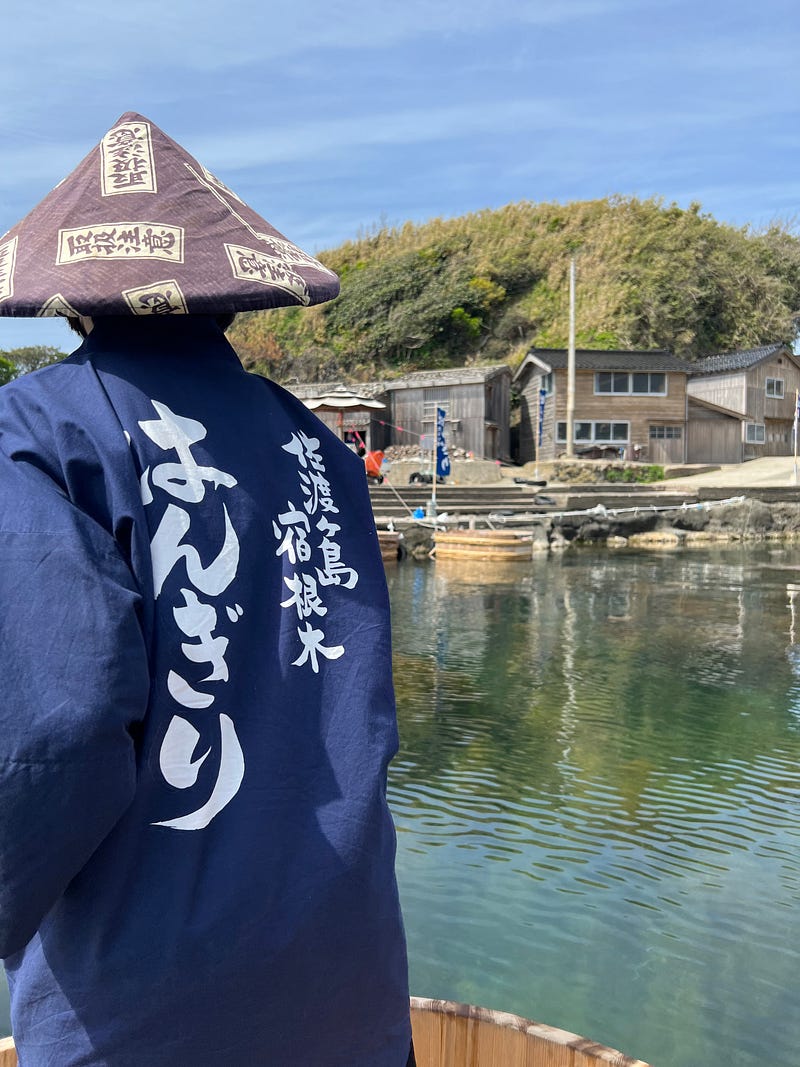
After being ferried about in a tarai-bune and seeing a surprising number of baby fugu pufferfish in the crystal-clear water, I headed off to explore the town’s museum.
Ogi Folk Museum
In 1920, an elementary school was built in Shukunegi. Due to population decline, the school was converted into a museum in 1972.
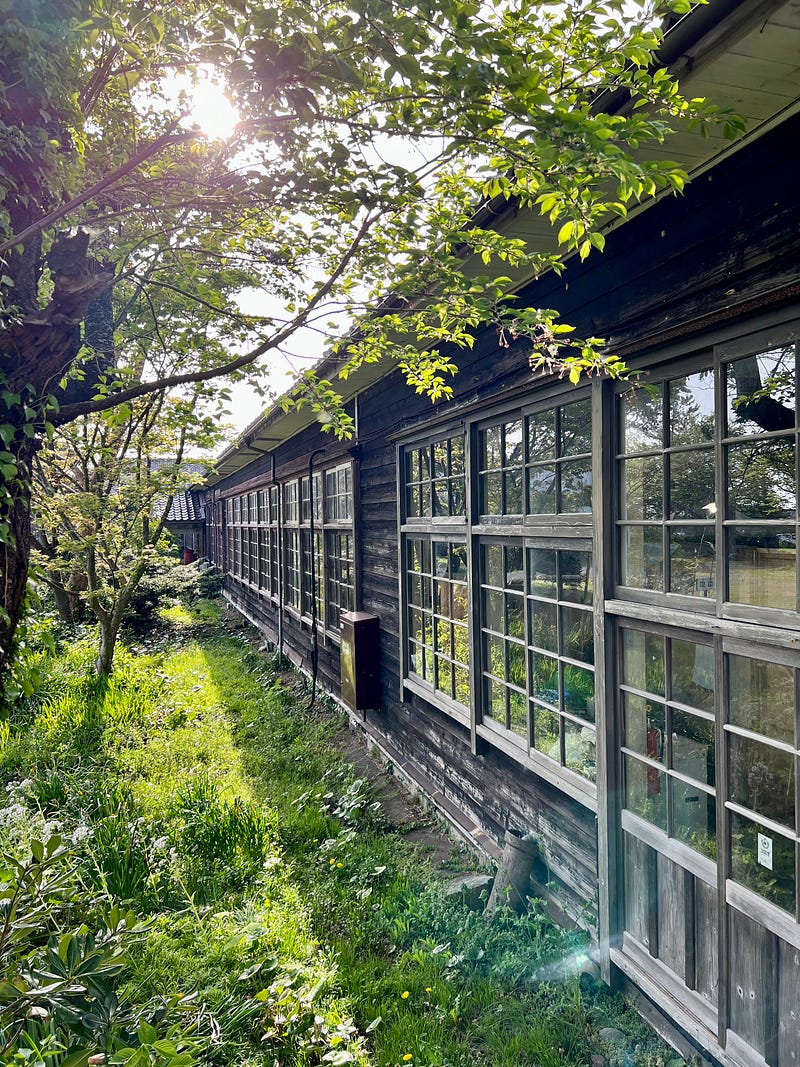
A faithful reproduction of a Sengoku-bune nearly fills its auditorium, surrounded by a collection of old coins, beautiful ceramics, lacquerware, old chests, and other relics.
Each classroom is dedicated to a different category of objects. They are filled nearly to overflowing, giving me the impression that many grandmothers must have donated the contents of their many storerooms.
I was captivated by this amazing treasure trove of ancient and curious items, from old ema tablets, saddles, toys, shoes…
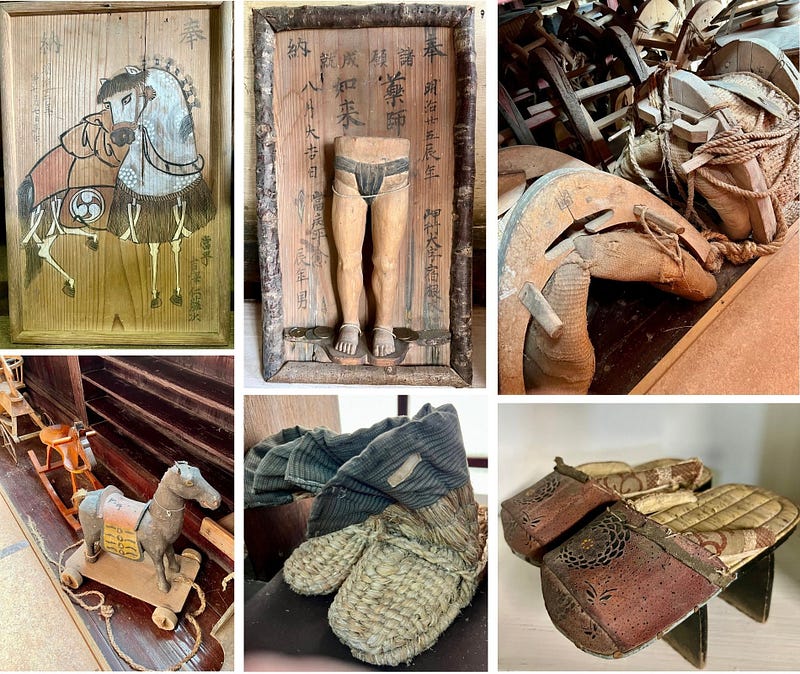
…to pipes, pottery, masu measuring boxes, toilets, fishing tools, bamboo products, and more. According to the gentleman who works there, who, incidentally, graduated from that elementary school, the building houses more than 30,000 items.
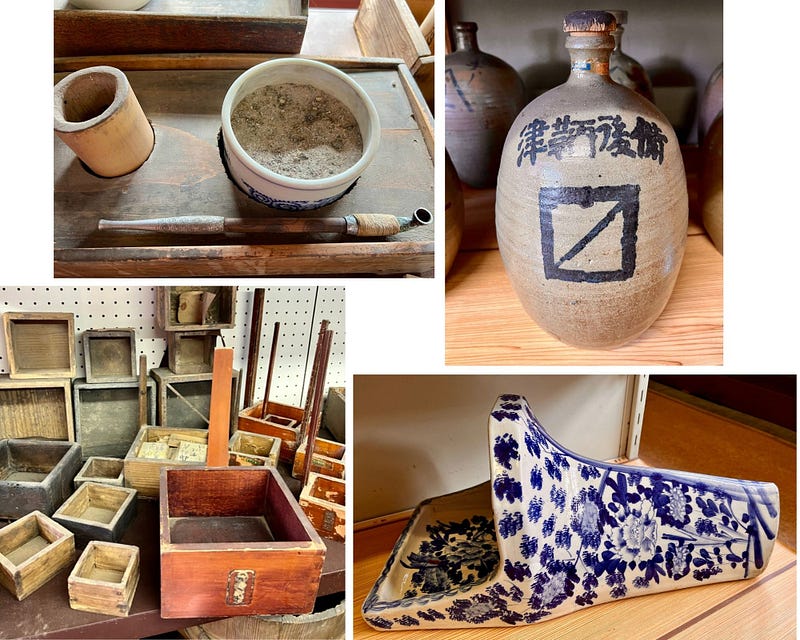
Yet, of all the hundreds of pieces of pottery in the museum, not one was made on Sado. All of it was brought in through trade, including Jomon era (14,000–300 BC) pots from neighboring Niigata.
After nearly being overwhelmed by the huge variety and amount of items to look at, I asked the fellow at the museum about a collection of Buddhist Jizo statues I had heard about. He knew what I meant.
Since there was no one else at the museum, he left and led me down a long staircase into the heart of Shukunegi Town to a small graveyard. He told me the Jizo were behind a collection of statues.
We gingerly climbed up over the ancient statues and, indeed, the Jizo were there, grown over by grass and weeds. I guess there just aren’t enough people to get everything done in that small town.
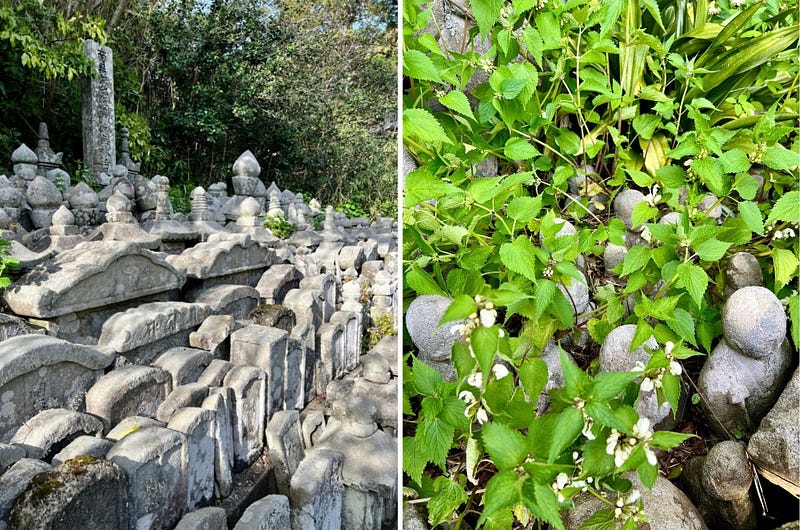
This kind man then suggested that I might like to visit a cave nearby. After walking together back to the museum, I thanked him and then followed his directions to a staircase that led up from a narrow road.
Iwaya Cave
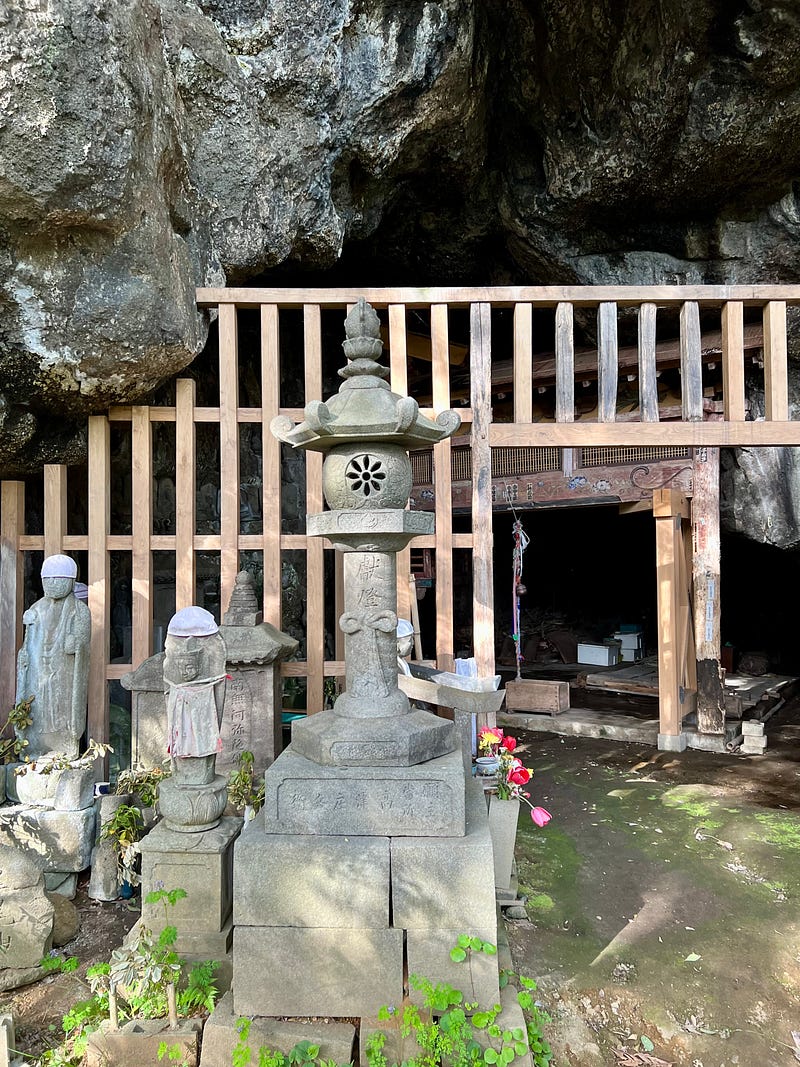
What I found up that stone staircase was a large sea cave created hundreds of thousands of years ago. Iwaya Cave is 70 meters above sea level, the rise in elevation is thought to have been caused by the major uplifts in the earth’s crust that occur about every 1,000 years in this area.
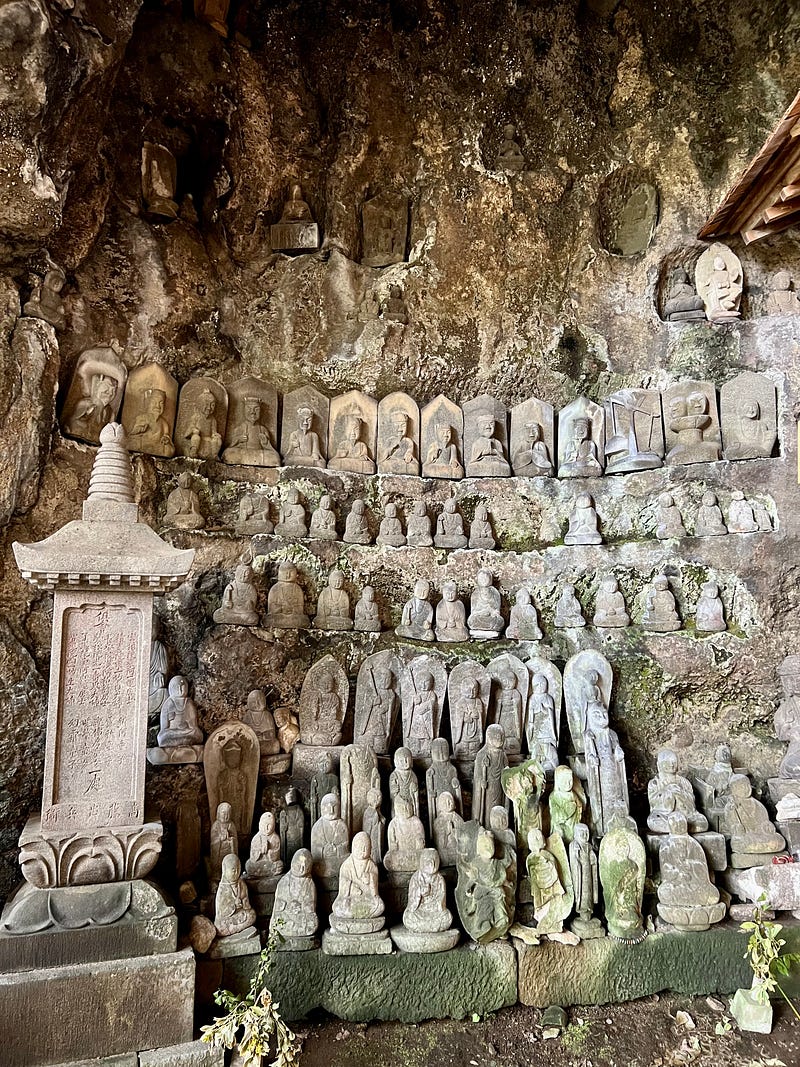
In this cave, archeologists have discovered ceramics dating from the Jomon era (14,000–300 BC) clear through to recent years, carvings from the middle ages, coins, ironware, and more. It is still a remarkable place, although questionably looked after.
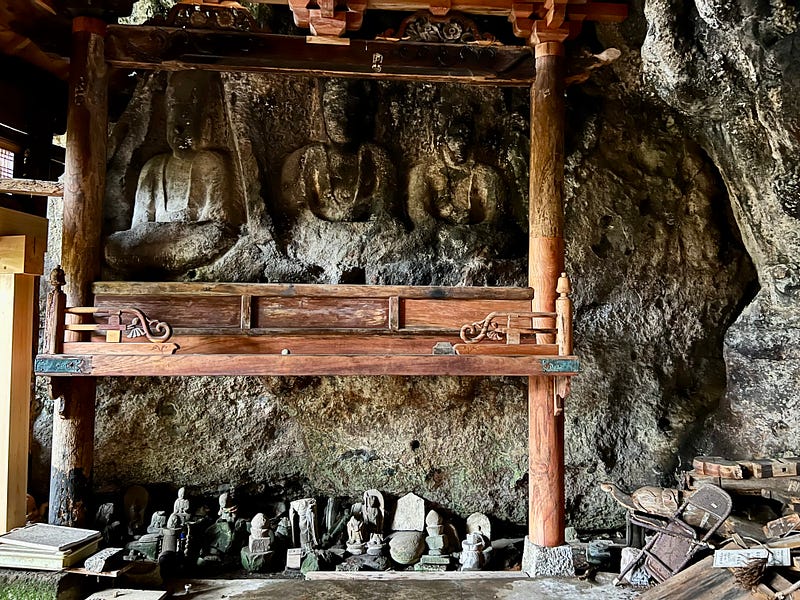
Buddhist images carved into the cave walls are attributed to Kōbō Daishi, who founded Shingon Buddhism in the early 9th century.
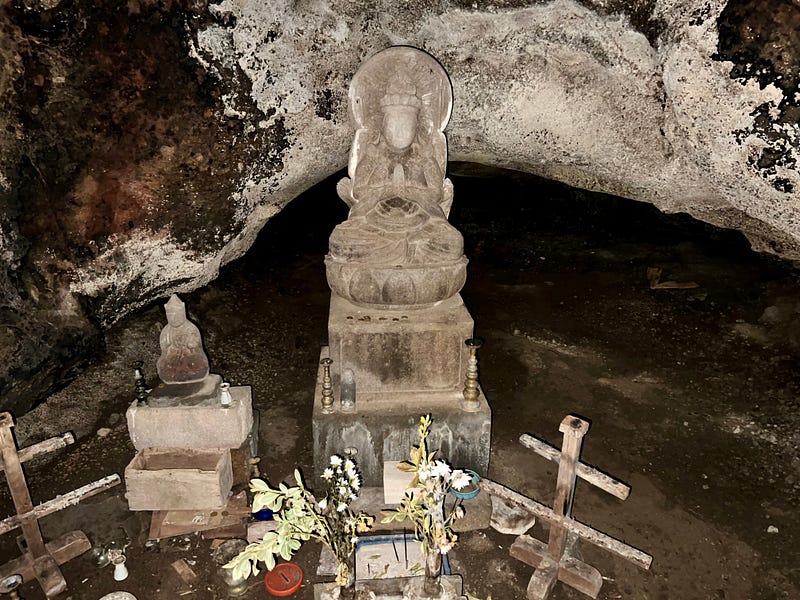
In the far back of the cave, in pitch dark, is an image of the Eleven-Faced Kannon, goddess of mercy, who sailors prayed to for safekeeping. My camera flash allowed me to capture its image.
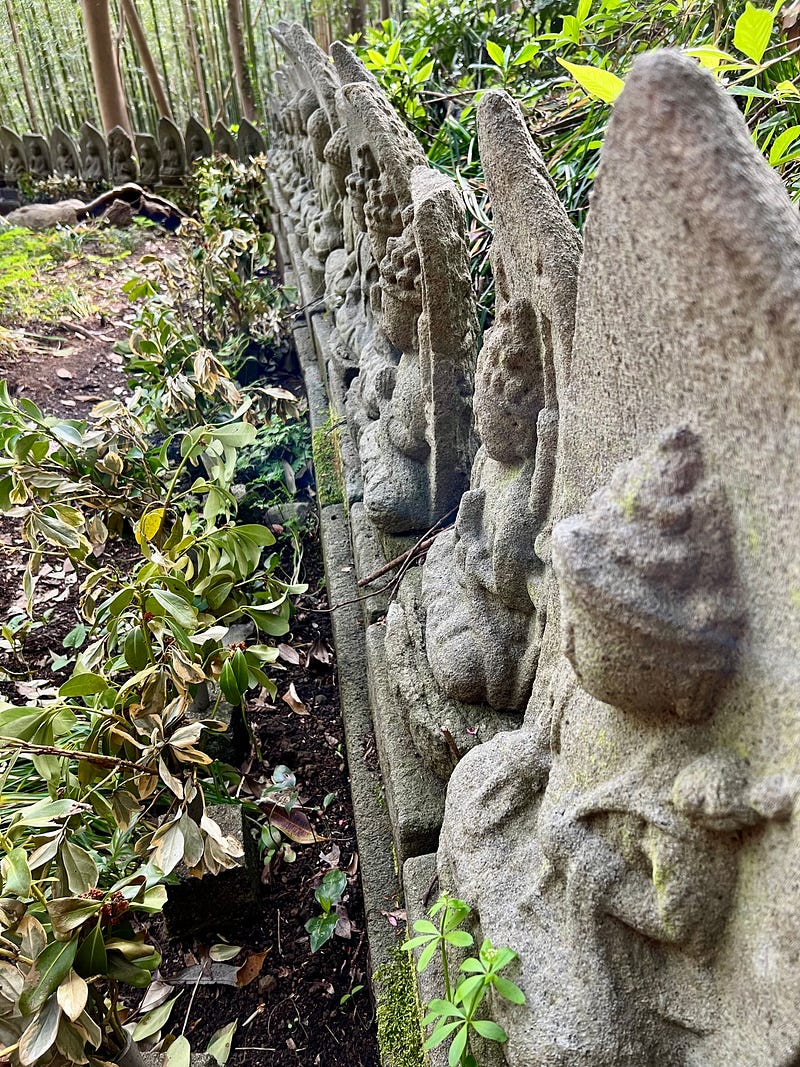
In front of the cave are 88 stone Buddhas, representing the 88 sites of the pilgrimage on Shikoku island, established by Kōbō Daishi.
There are small towns like Shukunegi all over Japan, filled with interesting stories and hidden treasures. Fortunately for the people of Shukunegi, their town was declared an “Important Preservation District for Historic Buildings” in 1991. It is one of 126 such areas scattered across Japan that are being preserved, and they are well worth searching out.
Although we tend to think of the past as remote and distant, much of it lives on in rural Japan — in towns like Shukunegi.
If you have questions about Japan or suggestions for articles, please add them in the comments. For more photos and information on Japan, follow me on instagram at: https://www.instagram.com/more_than_tokyo/




